Ferns really are a terrarium’s best friend.
These beautiful plants are almost universally suited to terrarium life, and they come with more shapes and textures than you can shake a stick at.
From soft and frilly to bold and dramatic, it’s rare that a terrarium feels complete without at least one fern.
That said, with such variety comes some important choices – not every fern will be suitable.
Whether it’s secret drama queen energy (cough, Maidenhair Ferns) or surprising monster growth potential, choosing the right ferns for your terrarium is essential.
In this article, I will take you through the different types of terrarium ferns and help you identify the best species for your next project. Plus, I’ll show you how to best use them for dramatic visual effect.
Let’s jump in.
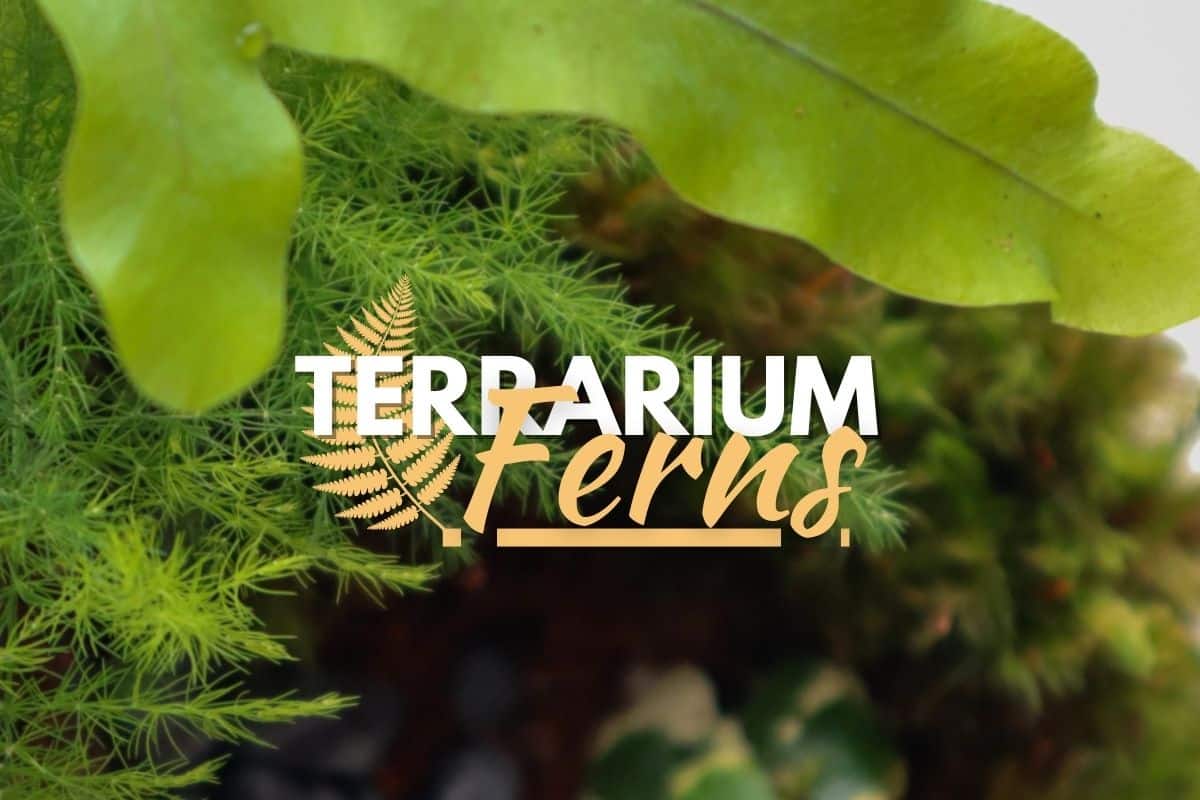
Terrarium Tribe is reader-supported. When you purchase through links on our site, we may earn an affiliate commission (at no further cost to you). 💜
Choosing Ferns for Terrariums
Ferns are a versatile bunch.
Characterized by their unique fronds (the technical term for their uniquely divided leaves), ferns range from broad, rounded, and flat to fluffy, ruffled, and frilly.
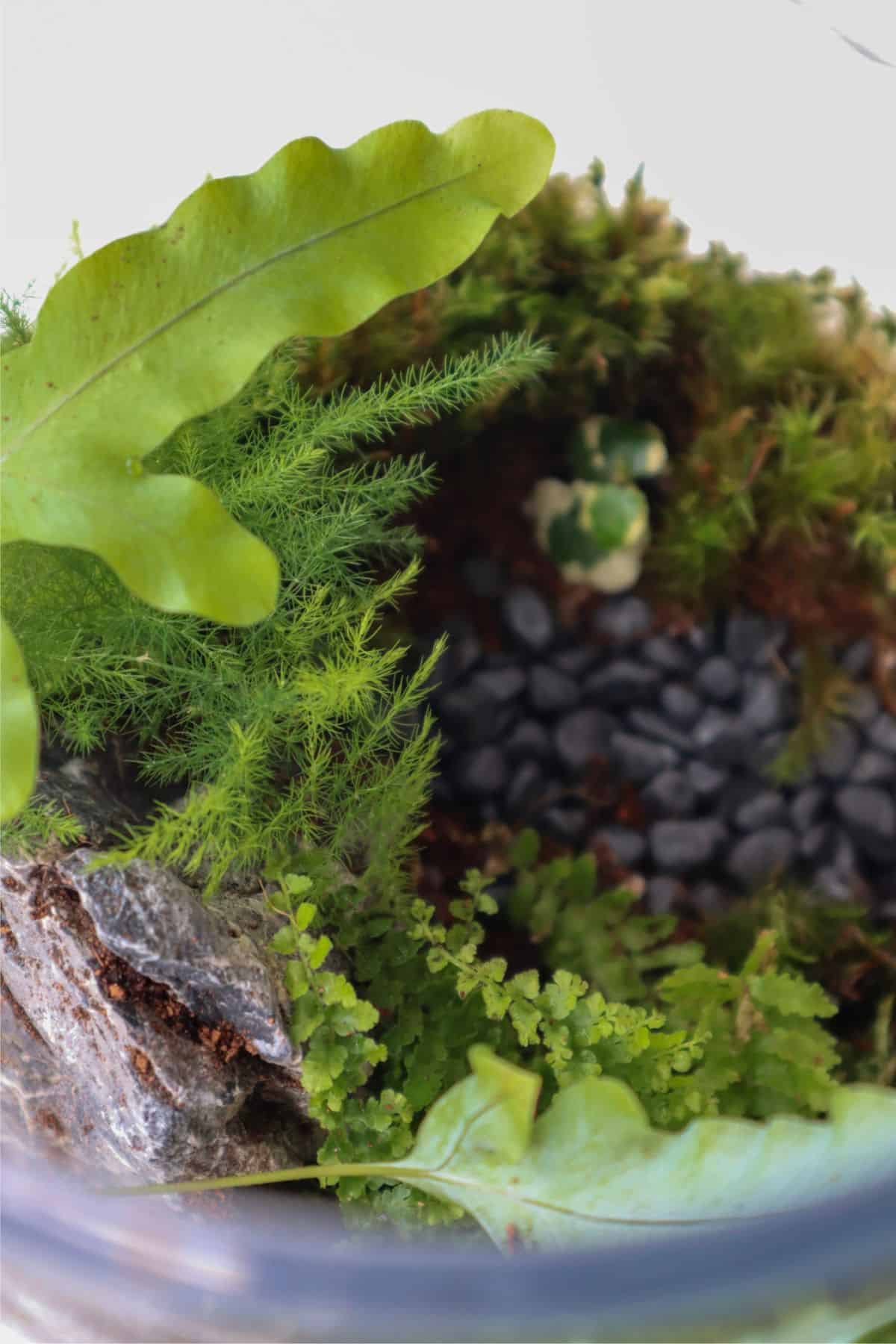
Both tropical and temperate ferns can work in terrariums, but tropical ferns are the natural fit.
They love moisture around their roots and in the air around them, so they’re perfect for closed terrarium environments. Plus, on the whole, ferns are low-light terrarium plants, making them pair nicely with other popular terrarium plants.
When choosing ferns for terrariums, you’ll want to consider these things:
- Plant size – Generally, you’ll want to look for naturally small terrarium fern species (or dwarf varieties) so they start small and stay small.
- Frond size – Ferns are generally quite easy to trim back, so you can arguably opt for a larger fern and manage it appropriately. But some ferns have huge fronds, so if you trim them back, you’re cutting out 1/3 of the plant each time… Not ideal.
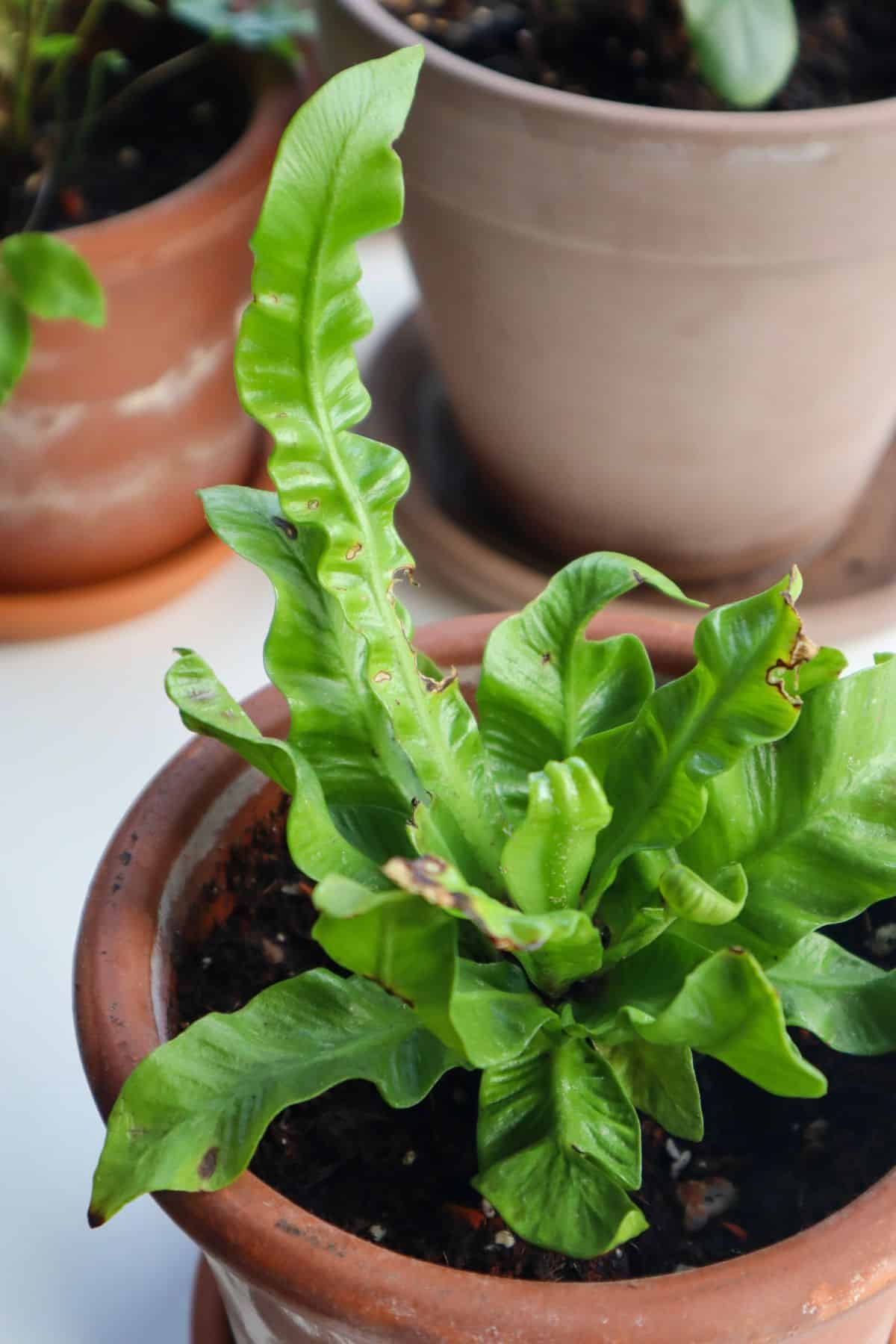
- Planting type – The versatility of ferns means that different species can be planted differently. Most are terrestrial, meaning you plant them in the substrate like most plants. But many are epiphytic, meaning they’re best grown attached to objects like driftwood branches.
Of course, there are many other things to consider, from care requirements to growth patterns, but these can all be managed.
Let’s check out the best terrarium fern types, shall we?
Terrarium Fern Types
Small Ferns for Terrariums
We’ll start with the small ferns.
The kind that can be planted right in, with no worries of them outgrowing the space.
It’s all too easy to buy what looks like a cute little thing at the garden center that turns out to be a baby giant plant…
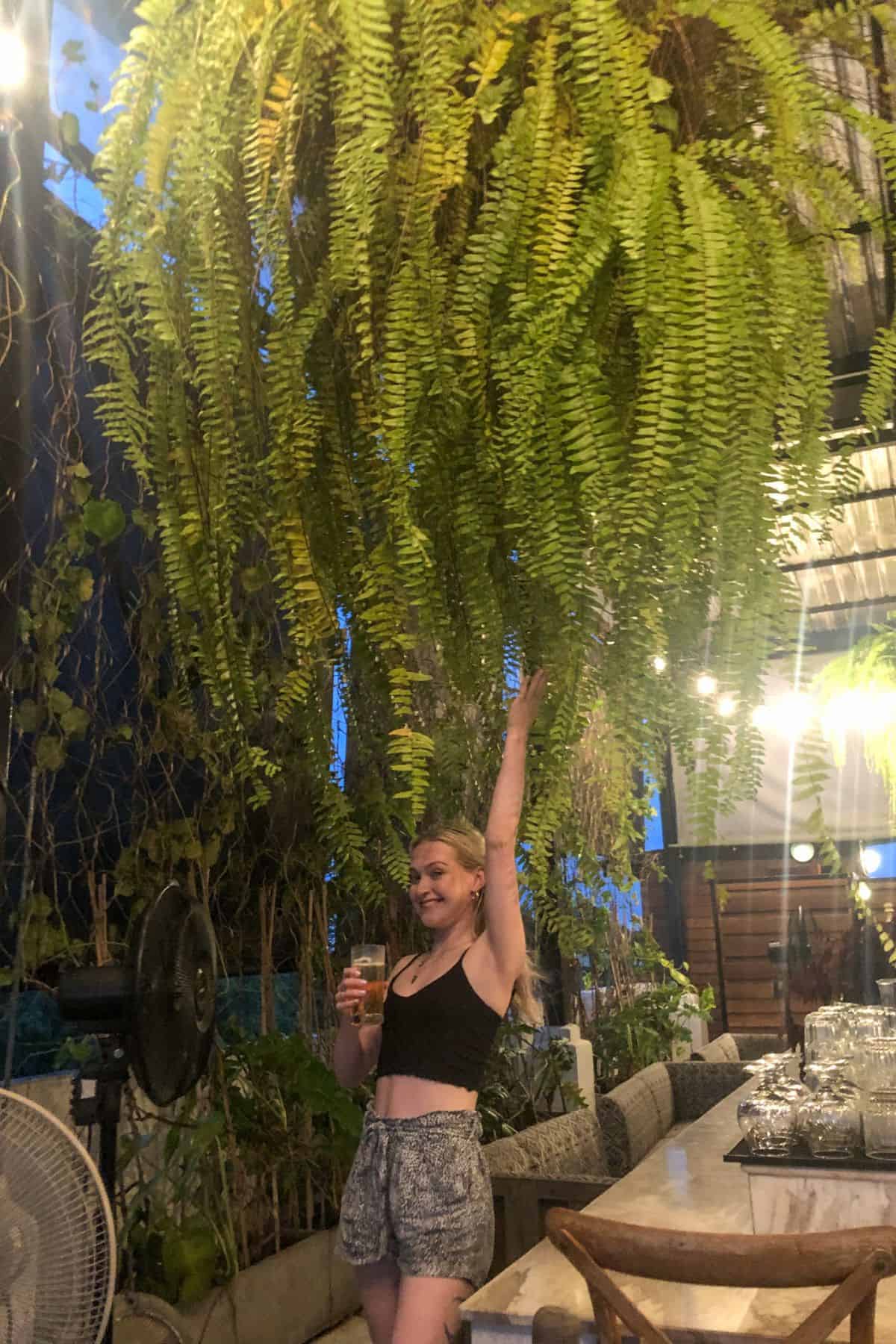
Thankfully, some of our favorite houseplant ferns have smaller cultivars that we can take advantage of, and a handful of naturally small ferns fit the bill, too.
Here are some of our favorites.
1. Miniature Ferns/Dwarf Ferns
These are my bread-and-butter terrarium ferns.
Growing up to around 12 inches tall, they make fantastic compact all-rounders. I use them in almost every project in one way or another.
- Nephrolepis cordifolia ‘Duffii’ (Lemon Button Fern) – Shop on Etsy.
- Pellaea rotundifolia (Button Fern) – Shop on Etsy.
- Nephrolepis exaltata ‘Fluffy Ruffles’ (Dwarf Boston Fern) – Shop on Etsy.
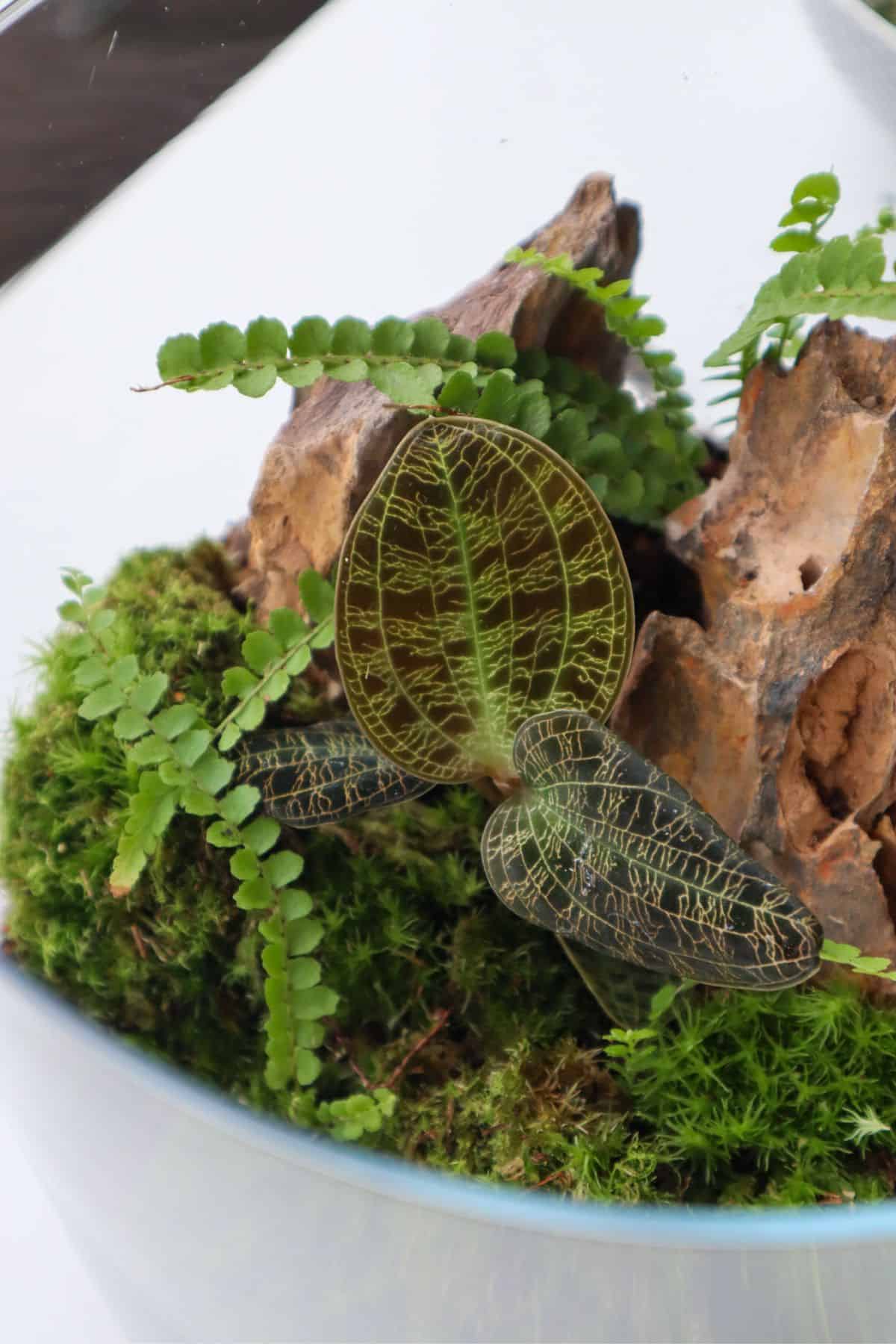
Each is a typical terrestrial fern, so you can plant them up directly in the substrate.
👉 For more small fern inspiration, check out my top 10 miniature ferns.
2. Micro Ferns
Need a truly tiny fern? You’ll want to take a look at the epiphytic micro ferns.
As in, it won’t grow larger than a couple of inches, kind of tiny.
If you’re building a mini terrarium or just want to add some delicate texture to your ground cover or hardscape, these ferns could be a good choice.
- Bolbitis heteroclita ‘Difformis‘ (Mini Asian Water Fern).
- Pyrrosia piloselloides (Dragon Scale Fern) or Microgramma sp.
These are epiphytic, as small, delicate plants like these often struggle to compete for resources on the forest floor (and would be easily trampled).
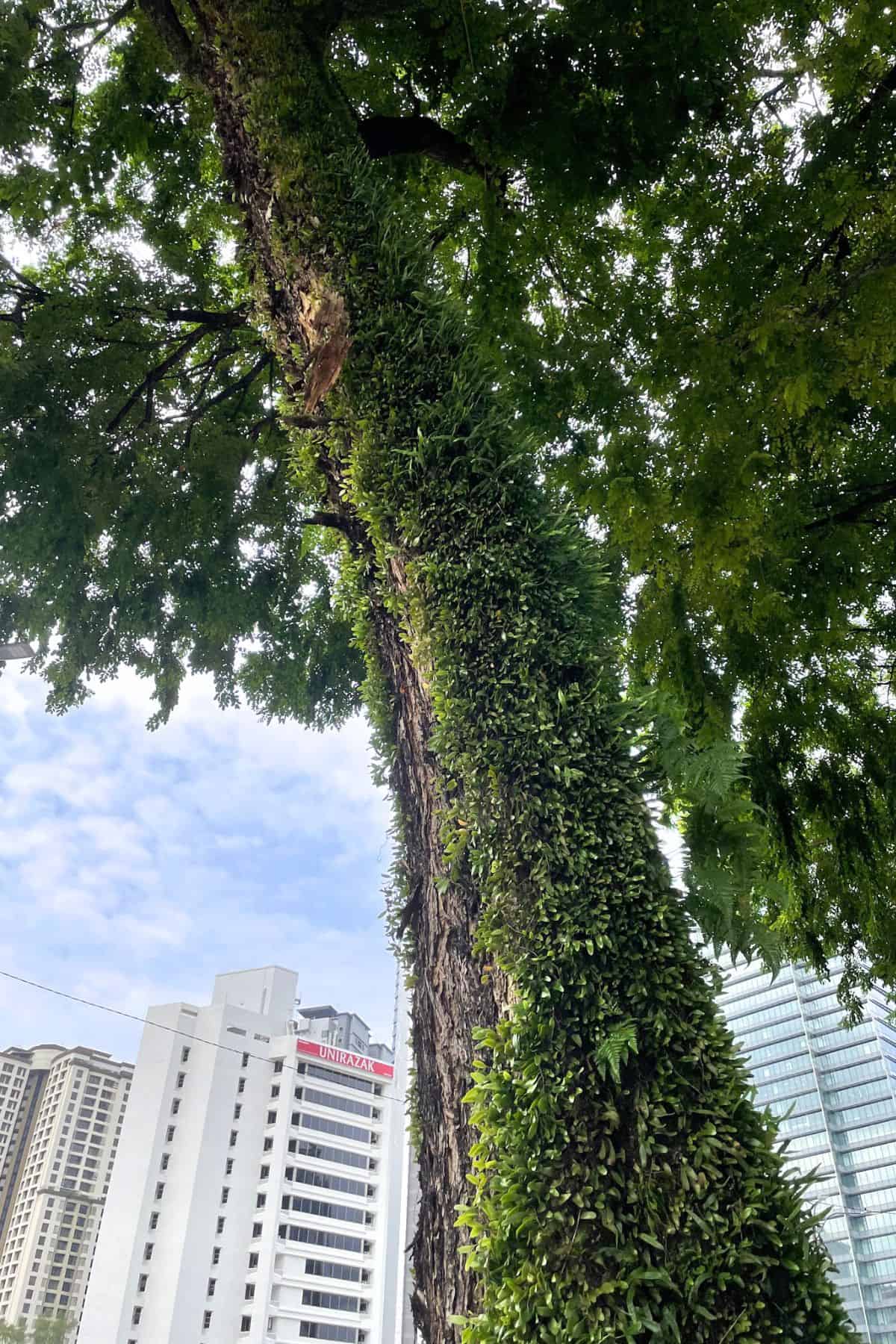
Easily Divided Larger Ferns
The best part about fern versatility is they can often be easily divided to create plants that are exactly the right size!
Which will be explained more in the propagating section later.
In short, dividing a fern is simply about (lovingly) tearing or chopping a plant up into smaller plants.
Though it sounds barbaric – and honestly, it does feel it when you’re doing it – you’d be surprised how many “single plants” are actually groups of smaller ones.
Many will readily be teased apart.
You can get really creative in finding the perfect little plant for the various spaces in your terrariums.
Why get one small fern when you can easily “make” a small fern out of many larger common indoor ferns?
- Asparagus setaceus (Asparagus Fern) – Shop on Etsy.
- Pteris ensiformis (Silver Lace Fern) – Shop on Etsy.
- Adiantum raddianum (Maidenhair Fern) – Shop on Etsy.
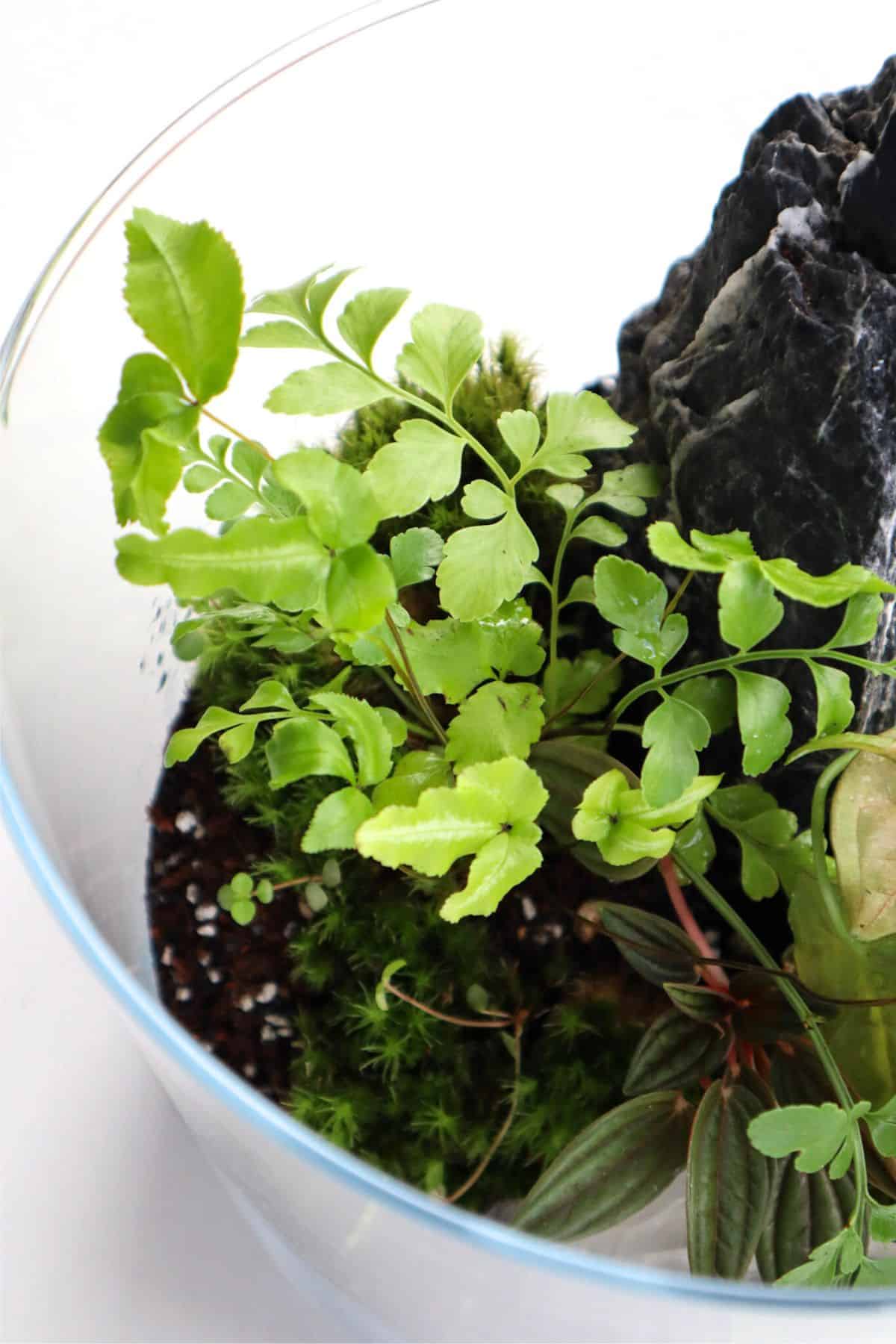
How to Propagate Ferns For Your Terrarium
Ferns are ancient, non-flowering, spore-producing plants with unique parts and structures.
This means we can’t get them from seeds, but it offers new ways and opportunities to get new plants from them.
1. Division
The main way to propagate ferns is through division.
Essentially just dividing a single larger fern into smaller viable plants. Each should have a good amount of leaves and a healthy supply of roots/stretch or rhizome to give them a fighting chance.
Depending on the type of fern, dividing the plant requires a slightly different approach.
Splitting Terrestrial Ferns
Terrestrial ferns tend to have typical root balls (or at least something resembling a proper root structure).
I’d argue these are more straightforward to divide.
Though it can take a bit of manhandling sometimes, these can often be gently teased apart to form a few smaller plants – each with its own set of fronds, stems, and roots.
Naturally, this works with larger ferns – that have plenty of plant to go around – but you can even do this with small terrarium ferns too!
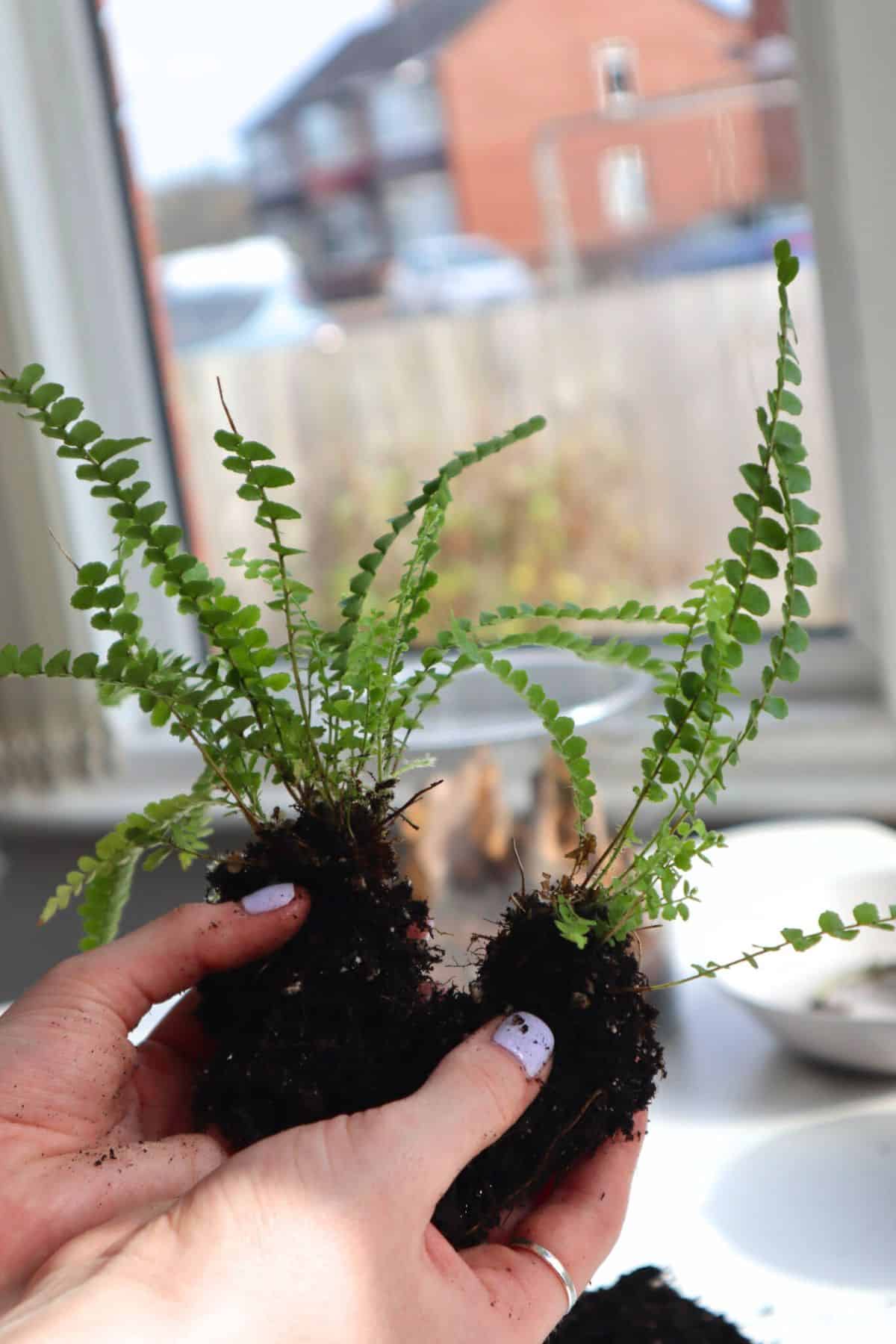
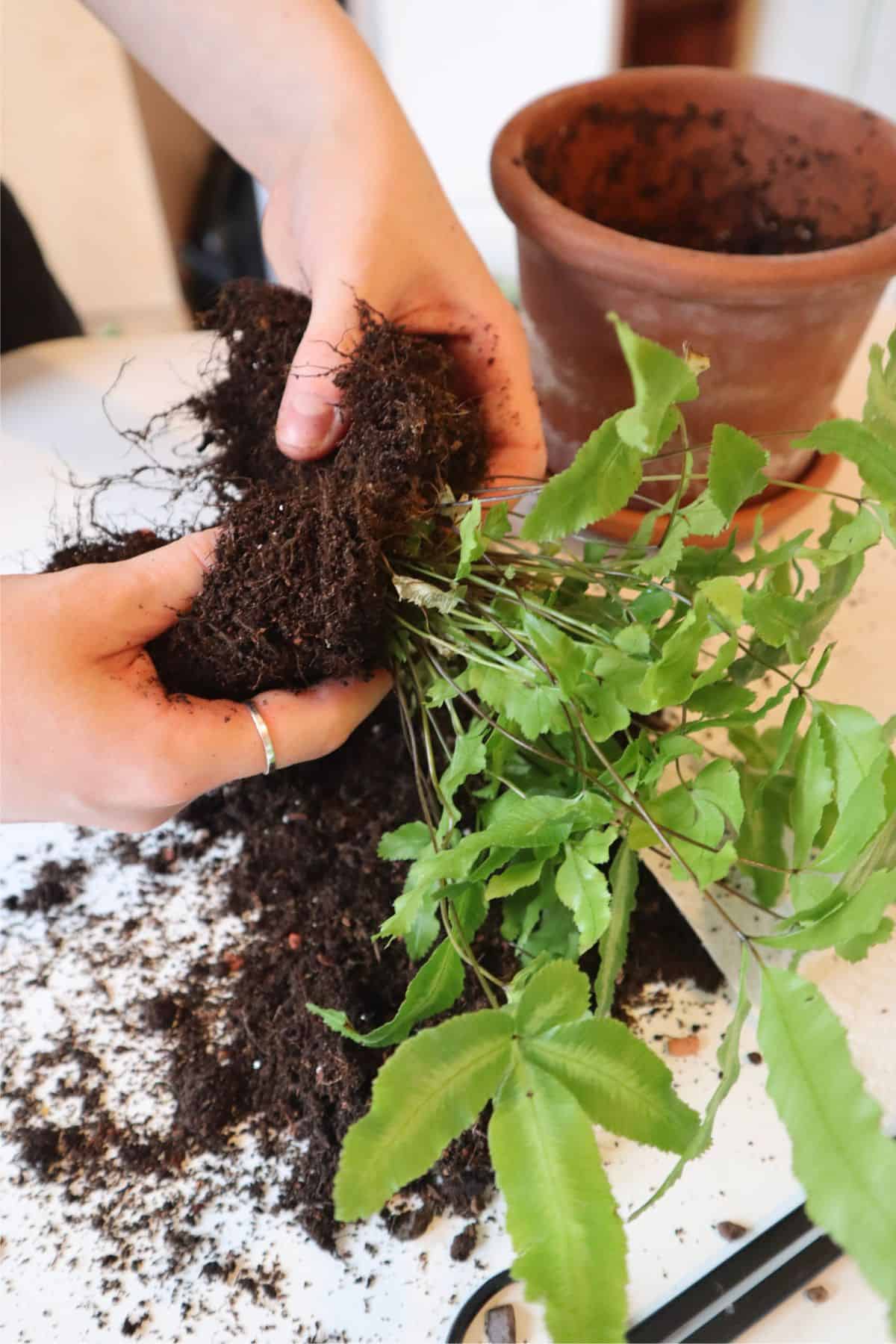
Splitting Creeping Rhizomes
Epiphytic ferns often grow from a creeping rhizome rather than a central root structure.
A rhizome is a horizontal stem that sprouts more fronds as the plant grows and expands. In reality, they look more like a thick root than a stem.
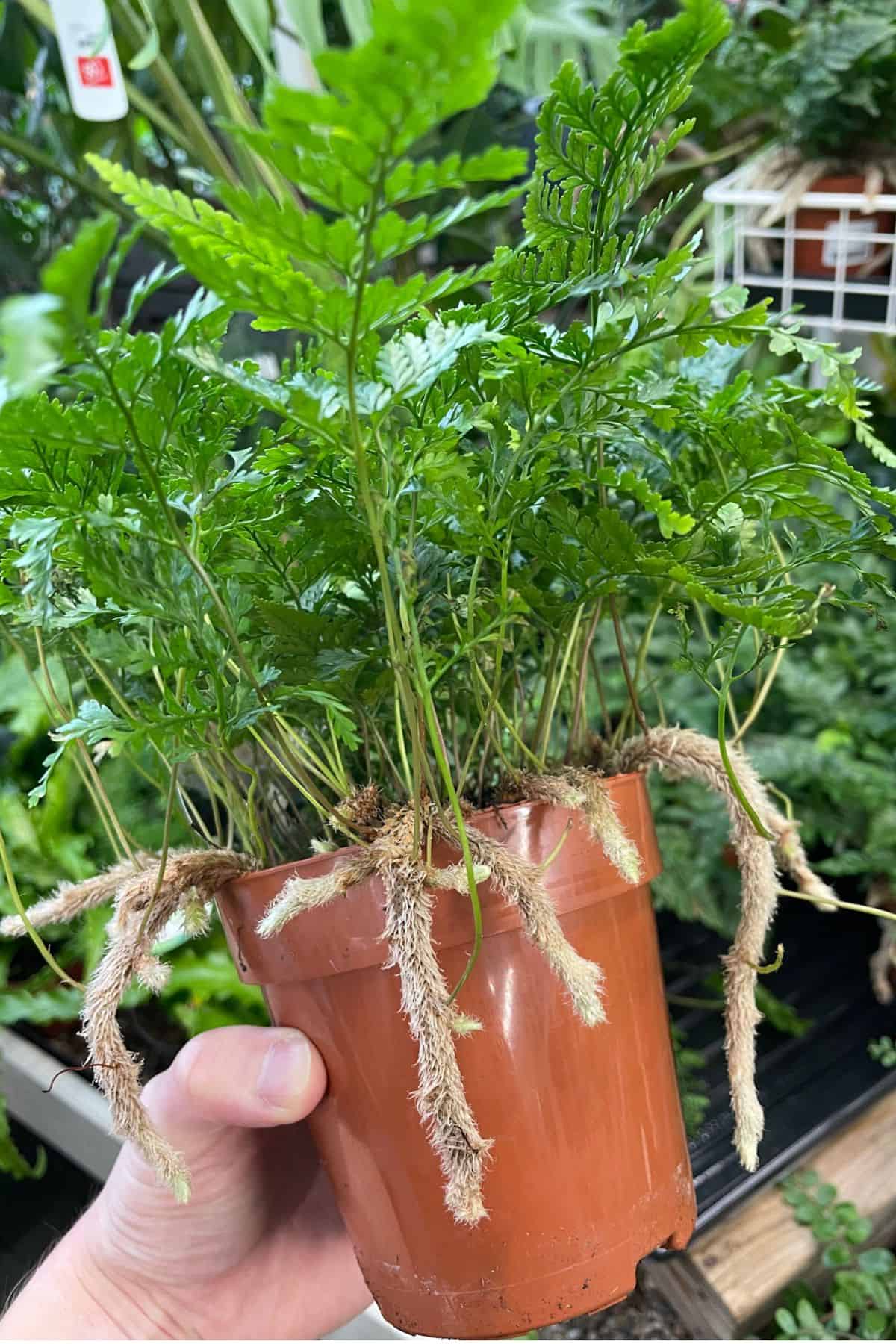
For these types of ferns, you can split the rhizome itself to form viable individual cuttings.
You’ll likely need a pair of sharp scissors for this one, so be careful!
2. Spores
Spores are the natural way that ferns typically reproduce.
They’re very effective in the wild with open air, breezes, and transient wildlife. Not so effective in a sealed terrarium with no airflow…
That being said, it is possible to harvest spores from mature ferns and use them to create new plants, but it isn’t easy to manage.
I wouldn’t recommend it unless you have a lot of time on your hands and patience.
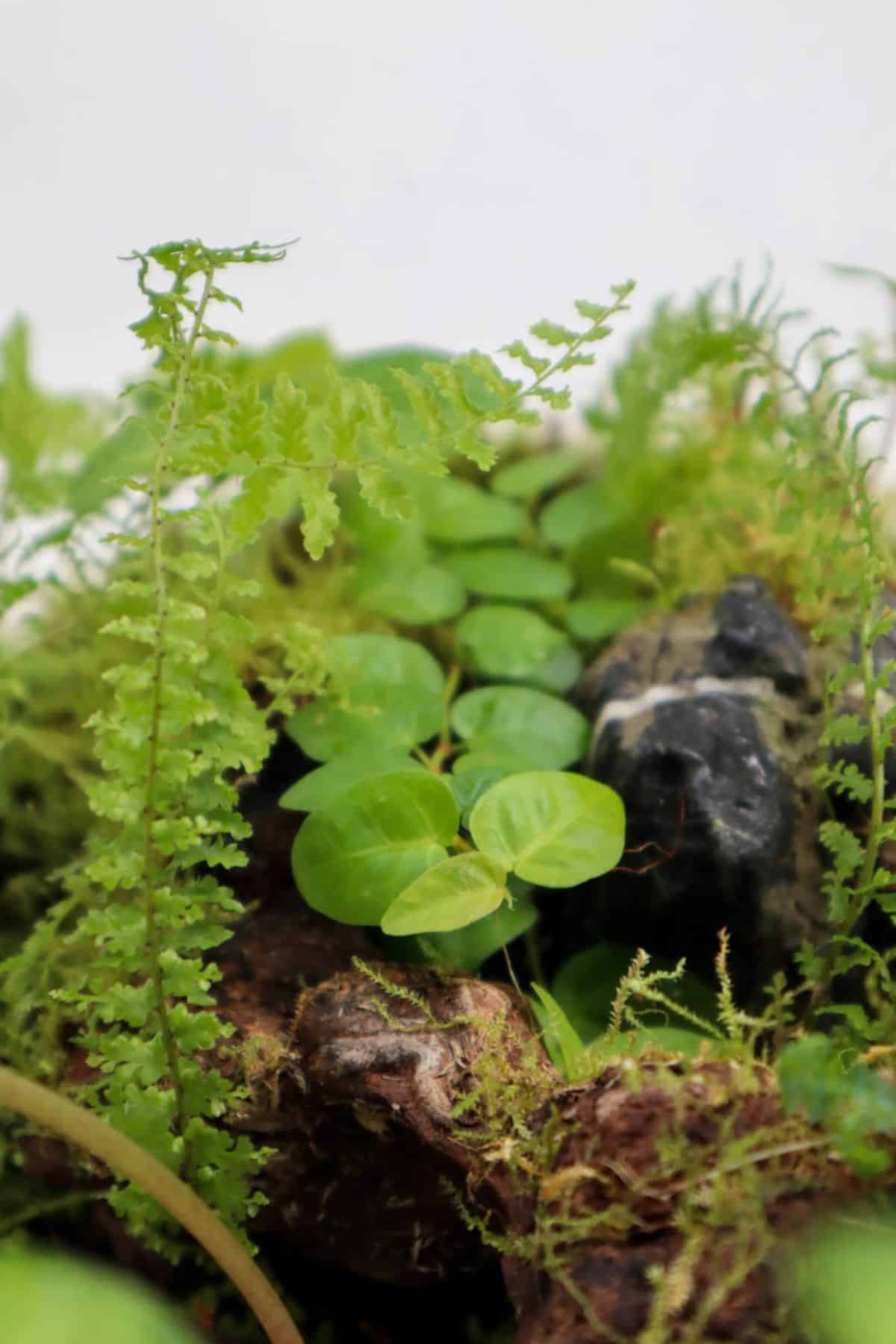
Terrarium Ferns – Planting Tips & Considerations
Different ferns will have their unique planting requirements.
For starters, you might find that terrestrial ferns with more typical root structures tend to have short and delicate roots. So make sure you choose a good substrate that can retain moisture well so that shallow roots can easily find water.
👉 Naturally, our tropical terrarium substrate mix is a great fit.
Of these kinds of plants, I’d recommend getting a mix of ferns of different textures to give a natural look.

The long, thin fronds of the Lemon Button Fern are great as highlights, whereas the bushy nature of the Fluffy Ruffles Fern makes it a better signature plant.
On the epiphytic fern front, they need to get their moisture from the air/watering source, so make sure they’re on a damp surface or misted regularly.

Honestly, it’s tricky to get it to work well without some sort of watering automation (e.g., a mister or waterfall). But if you can get a vining fern to weave through a driftwood branch, it can look spectacular!
Otherwise, it can help to saturate some sphagnum moss fibers in water and use that as a base to attach the fern to instead of a dry branch surface. An extra reservoir of moisture is always appreciated.
Over to You
What’s your go-to fern for terrariums? Let us know in the comments. 👇
I’m particularly interested in hearing about exotic epiphytic ferns!
Or, if you already have your ferns at the ready, go check out our online terrarium shop for the rest of your supplies!

I need to know exactly where to purchase ferns, baby tears and moss for a Terrarium.
If you check out the Terrarium Plant Index on this site, each plant profile links to a place where you can buy them 🙂
I have Baby Tears every day of the year because they are so cute I love them. There are two plants I know of they call baby tears. I have both but one I have a lot of due to my devotion to its cuteness. Look up Soleirolia. I have a lot of that one. Then look up Soleirolii. I have some of that. I have moss too. Ferns…there are 10,500 living species. Which one are you looking for?
Hi Dan – As somone who knows nothing about growing ferns (but would like to for a terrrium) that was the most well written explainer I have read. Thanks
Glad you found it helpful! Ferns are the best 🙂
Hi Dan,
I have a frosted fern that I just recently bought about three weeks ago. I put it in a glass vase as a terrarium and it’s not doing well at all! I have small white rocks in the bottom, covered with a layer of potting soil. It was doing well for a week, and then it started getting droopy and brown. Any suggestions on how to resurrect it? Help!
Those symptoms can mean a variety of things but it sounds to me like it needs more moisture. Selaginella (Frosted Ferns) typically love moisture and humidity, so I’d try adding some more water to the terrarium and sealing it up to generate as much humidity as possible 👍
Yes, it was sealed and condensation built up on the inside as I expected, and it still didn’t work. I’m at a loss as to how to resurrect it. Thanks for your help, though.
Hello, Can you plant a bunch of different ferns together in the terrarium?
Absolutely! Ferns tend to share very similar care requirements.
An excellent, informative article that seemed to cover everything. Our biggest challenge will be finding the miniature or micro ferns needed for our terrariums. Hopefully our local (Niagara) greenhouses will help us on our quest. If not, your links will take us on a different route.
Thanks Kim! Sadly the more niche picks can be tricky to source, but they’re worth hunting down.